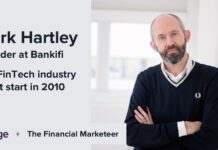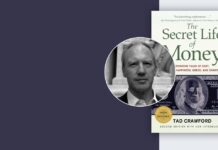Listen to the podcast episode
An interview with Bence Jendruszák, COO at SEON
SEON is on a mission to democratise fraud prevention. Starting life when two founders of a crypto exchange found they had a massive fraud problem, SEON has grown from a two-person operation to now employing 140 full-time employees.
Add to that that the firm has recently raised $12 million in a Series A funding round, the company is on an upwards trajectory.
This week, I was pleased to sit down with co-founder, Bence Jendruszák to talk about the journey SEON has been on and, in particular, how it has put in place an effective inbound-led marketing strategy.
Launching SEON
The SEON story begins with Bence and his business partner’s crypto exchange. “After starting to accept credit card payments we were faced with a massive amount of fraud. People were paying with stolen credit card information, they were using stolen credentials to check out.
“It was a massive issue, we thought we were going to burn to the ground if we didn’t solve it immediately.”
Like any founder, Bence and Tamás began looking for solutions to the fraud problem that threatened their young business.
“We looked at the fraud prevention market back then and there were some decent solutions out there but they were all aiming for enterprise clients. They had complex pricing matrices and integrations. Even if we wanted to get our hands on the tools we would have had to sit through multiple discovery and sales calls.
“This was frustrating because clearly, we weren’t their ideal customer profile.”
This realisation awakened the entrepreneurs within, as Bence explains, “…we said let’s build something in-house that’s going to solve our issues…[so] we pivoted towards developing a full-on fraud prevention suite [and] chucked the crypto exchange and here we are today.”
On a fraud prevention mission
“Our ethos is actually to democratise fraud-fighting.
“What we want to achieve is that we want to be the go-to solution for an online business. We want the ability to prevent fraud with the ease of integration and accuracy at a price that’s affordable.
“What we’re doubling down on is as a consumer you would consume Netflix or Spotify…you can get your hands on their services in a couple of minutes. We want to offer the exact same user experience in the fraud prevention world.”
As with any good idea, it seems that Bence and Tamás uncovered an underserved market. “Nobody is doing [this] at the moment…they are addressing a very different market, focusing on enterprise sales.
“We feel a lot of the market is being left out of the game and meanwhile fraud is an ever-growing problem so therefore we feel like there is an unaddressed market out there.”
Developing the product from the ground up
I asked Bence about how the team at SEON have gone about developing a product that fits its market, particularly as there was no directly comparable benchmark.
“Initially it was very much based on a gut feeling that there is an issue here and if we’re a business that doesn’t have a go-to solution, then there has to be a massive amount of other businesses out there.”
A significant part of the development process has focussed on working with real customers, as Bence explains. “[When] I was showing our product to these to-be customers out there, I would have first-hand feedback. They were asking, ‘do you have this feature, do you have that feature’?
“When I would hang up from the demo call, I would turn around to our developers and I would say this is what we need to focus on.
“That’s how we’ve scaled our product and it’s always been the way we develop new features. We’re always listening.”
Finding the first customers
Our conversation turns to the topic of marketing and in particular how SEON went from being a newborn company to filling a database with customers.
“We were doing outbound, so cold outreaching and that was generating demos for us and then parallel to that, we were building a content strategy.
“I think we took a very out of the box thinking approach when it came to content generation because we knew that there are all these fraud prevention products focussed on enterprise clients who most likely cannot write about controversial topics that we were writing about back then.
“An example of that would be [we wrote a blog post where] we tried to buy airline tickets on the darknet market, here’s what we found. You can’t really pull that off if you’re a massive company focusing on enterprise clients.”
Content, it’s fair to say, has formed a significant part of SEON’s marketing strategy to date. “We always tried to think, what would the content be that’s most interesting for fraud and risk managers out there, how can we give them additional insight into how these fraudsters are thinking and that’s what we tried to double down on.”
Tracking performance
In a world where performance metrics are (for the most part) more accessible than they have ever been, I wanted to learn from Bence how the team at SEON monitored the impact of marketing initiatives in the early days at the company.
“When it came to marketing initiatives we were doing mostly three things; we were generating content, we were tweaking PPC campaigns ourselves with no PPC background knowledge…and then we were focussed in on social media.
“These were the three channels of marketing that we focussed on in the very early days and it was very much of a gut feeling rather than actual attribution back then.”
How things have changed following the funding round
The conversation inevitably turned to the $12m funding round SEON successfully navigated earlier this year and Bence explained where the focus has moved to now.
“Post our funding round, our go-to-market is going to stay the same, so we are focussed on inbound just as we’ve been focussed on it all these years.
“When it comes to technology we want to double down on what we’re doing best which is data enrichment…what is going to shift is this heavy focus on the long-tail customer segment where we’re building actual e-commerce platform plugins.
“We have a strong content focus as of today still. Underlying that in order to serve as the foundation, we have an SEO team and then we have a very strong PPC team.
Expanding further, Bence tells me about how these internal teams are helping to shape the direction of the firm’s output. “What that means is that we know what keywords we want to focus on in the long term, we know what content we have to generate in order to excel and then we also know what type of campaigns to build onto that content when it comes to paid advertisements.”
Mixing in product marketing
“Something which is recent is the product-led growth approach where we are creating a very strong bridge between our product team and our marketing team and we’ve actually brought on board a product marketing manager for that exact reason.”
The blend between product development and external marketing is clearly becoming more important at SEON.
When and when not to listen to advice
As is often the case, our conversation turns to how to handle advice, particularly in the fast-moving world of digital marketing where trends come and go very quickly.
“People will give you advice on what to do and what not to do but a lot of things that work for us today and that we know doesn’t work for us today has just been trial and error over the years.
“I think pre-Series A [investment] the investors are actually aware of the [trial and error approach]. They know they are investing in you being able to find your product-market fit.
“Once you start nearing Series B the investors focus more on the unit economics and actually seeing if you know you’re going to be spending on something whether you’re already aware of the return on investment.”
Sometimes then it pays to just test and learn.











